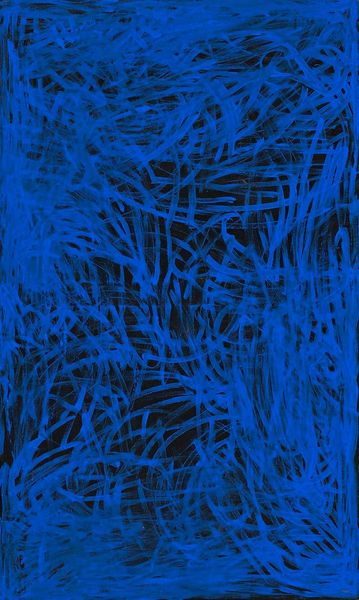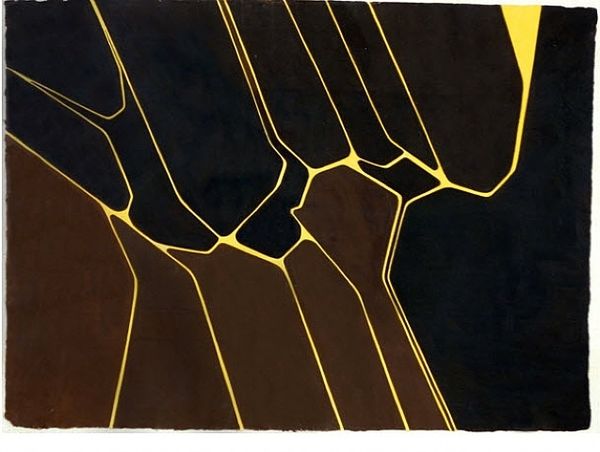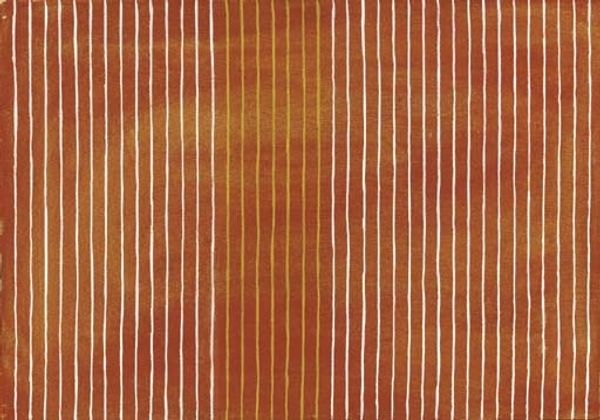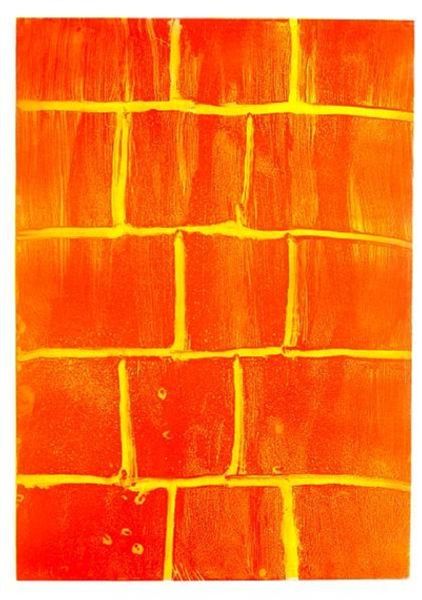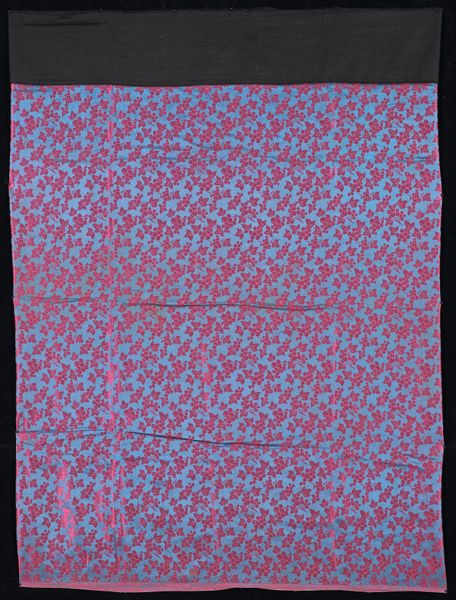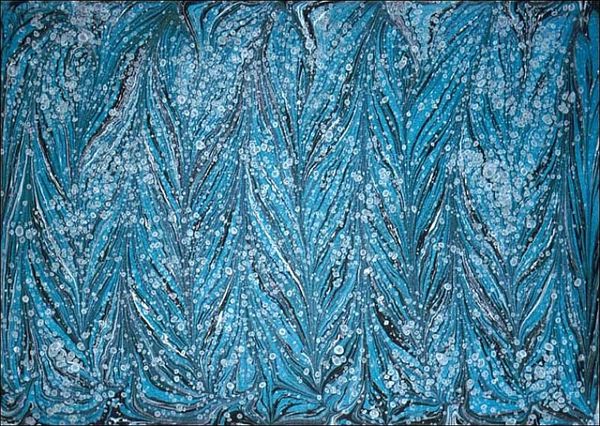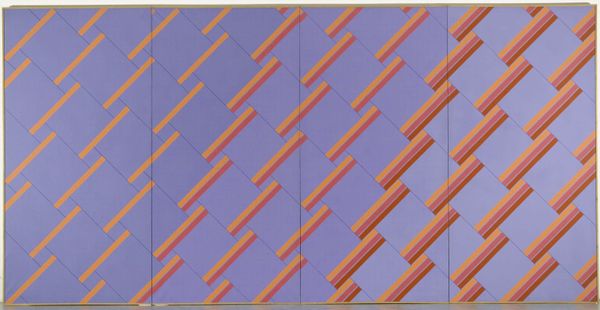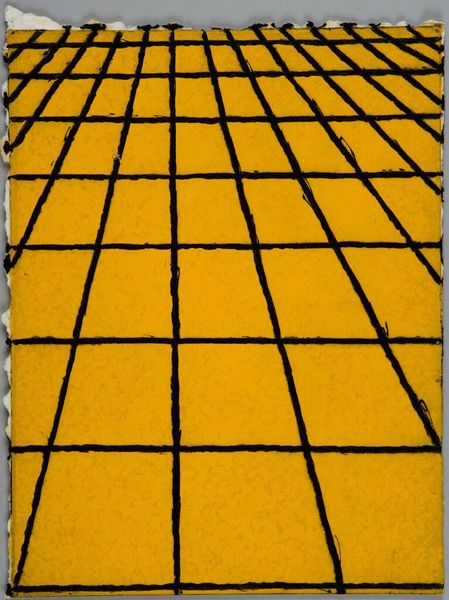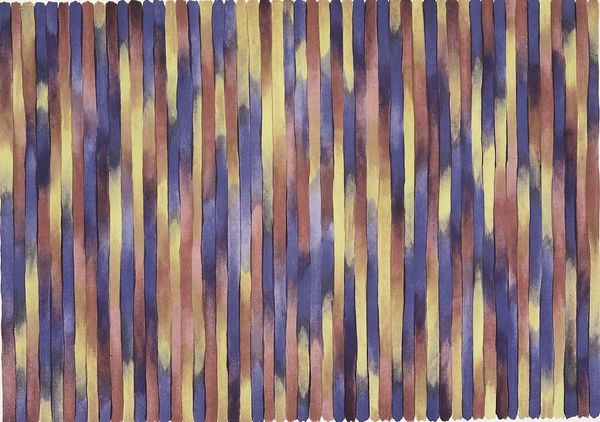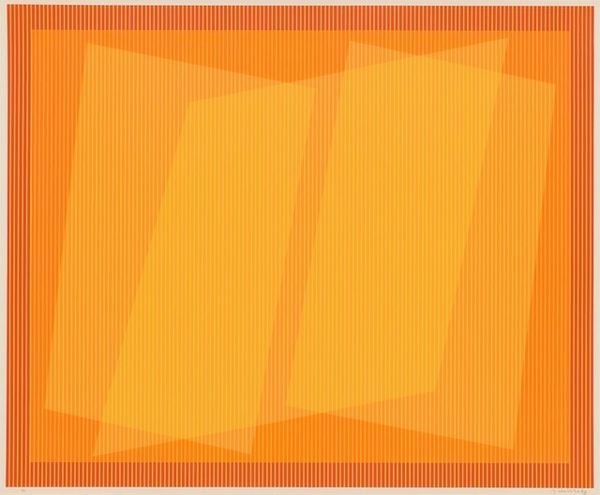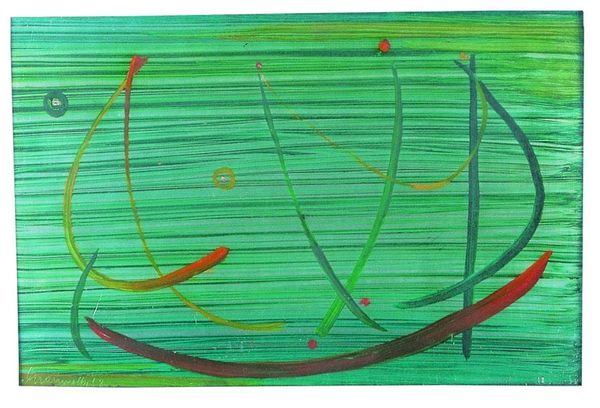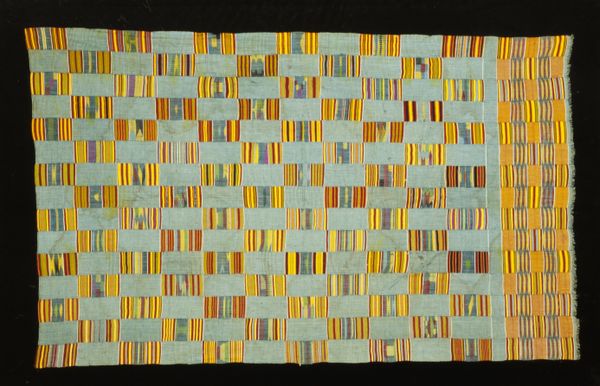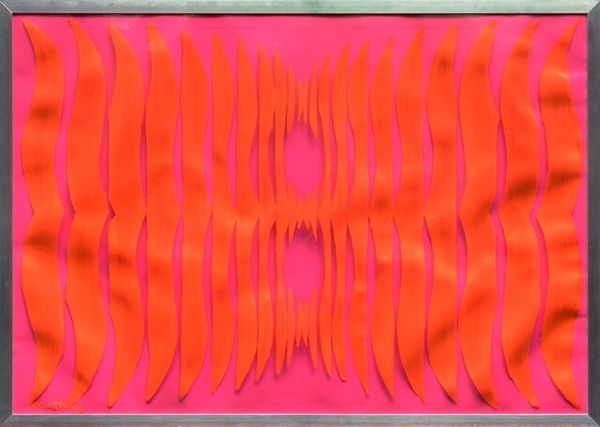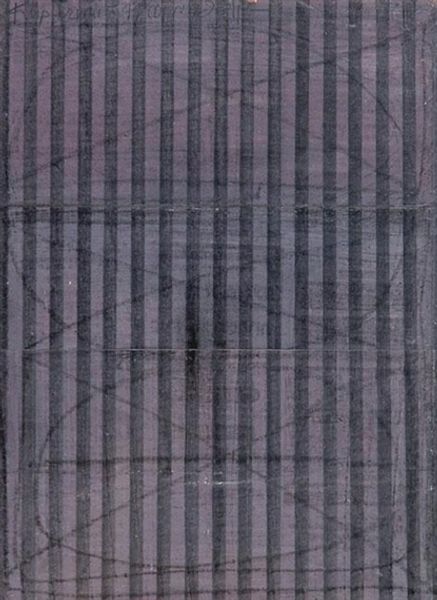
Dimensions: support: 2083 x 1016 mm
Copyright: © Richard Smith | CC-BY-NC-ND 4.0 DEED, Photo: Tate
Editor: This is "Mandarino" by Richard Smith, date unknown, and held at the Tate. It's quite large, and the orange and blue fields are so striking. What do you see in this piece? Curator: Well, I see a commentary on consumerism and its impact on identity. The title, "Mandarino," suggests a vibrant, almost artificial, quality, reflecting the hyper-real colors used in advertising. How might this relate to the way we construct our self-image through purchased identities? Editor: I never considered that! The composition is so geometric, I was focused on the formal elements. Curator: Precisely. And consider the tension between the hard lines and the soft, almost tactile, fabric. What does that contrast evoke for you in terms of gendered spaces and expectations? Editor: That’s fascinating – I’m going to have to rethink the whole thing. Thanks! Curator: My pleasure. It’s a piece that keeps giving, and questioning.
Comments
Join the conversation
Join millions of artists and users on Artera today and experience the ultimate creative platform.
tate 7 months ago
⋮
During the 1960s Richard Smith produced a large body of work which pushed the definition of painting to the limits, exploring the relation between two and three dimensions. In Vista 1963 (T00855), Smith challenged the conventions of easel painting by adding shaped extensions to the rectangular canvas. In subsequent works such as Giftwrap 1963 (T02004), or Riverfall 1969 (T01161), Smith constructed different types of three-dimensional additions that projected into real space, so rupturing the flatness of the picture plane. However, notwithstanding works engagement with the sculptural, Smith always emphasised the importance of his work as painting. A work might project outwards into the space of the world, but it would continue to maintain a relation to the wall. Smith never made fully free-standing, three-dimensional objects. In the early 1970s Smith's investigation of painting began to take a slightly different direction when the work became less three-dimensional. Continuing to explore the relation between painting and space, he became increasingly concerned with texture and surface. The flatness of painting has its origins in the flatness of the canvas support. Smith followed such a deduction to its logical conclusion, abandoning the conventional stretcher and working with the canvas support itself. In 1966 he had designed a tent for the Aspen Colorado Design Conference. This had led him to think about how it was possible to stretch canvas over rods, as collapsible tents are erected on poles. Dealing with the canvas in this way, he began to work on the so called 'Kite' series, abandoning what he felt to be the excessively bulky, wood stretchers employed in the production of the three-dimensional works. As the name suggests, the works in the new series evoke the two-dimensional structure of kites. Many also suggest a delicate membrane such as skin. In the first works of the series, Smith stretched canvas over aluminium poles whose presence was indicated by ties on the picture surface. He made subtle play between the painted canvas and interwoven tapes or hanging threads. However, in later works the supports were displayed on the surface rather than concealed on the reverse. In Mandarino the canvas is stretched between three aluminium tubes placed diagonally across the back, and six lying diagonally across the front. Strings run through the tubes in order to attach the poles to the canvas. The canvas edges were left raw, and Smith contrasts the harsh, linear tubes with the soft, silky texture of the orange and pale blue paint. The poles can be compared to drawn lines, as can the taught black string which lies across the front of the image, by which the canvas is attached to the wall. When the picture was placed on the wall, it hung askew. Smith had expected it to hang upright, but he decided to let gravity determine the angle from which it would hang. The work was named Mandarino because when Smith saw it hanging, he was reminded of a Chinese junk sail. In subsequent works such as the 1973 commission for Mr. Chow's restaurant in Los Angeles, Smith took the kite theme even further. Large black and white canvas disks were hung from the ceiling of the restaurant above the heads of the diners. In such works Smith began to explore the relation between the two-dimensional painted surface and the three-dimensional space of the world, creating layered environmental installations that evoked sails or hanging sheets. Further Reading:David Mellor, The Sixties Art Scene in London, exhibition catalogue, Barbican Art Gallery, London 1993, pp.124-131Marco Livingstone, Pop Art: A Continuing History, London 1990, pp.109-111Bryan Robertson, Richard Smith Paintings 1958-1966, exhibition catalogue, Whitechapel Art Gallery, London 1966 Imogen Cornwall-Jones October 2001
